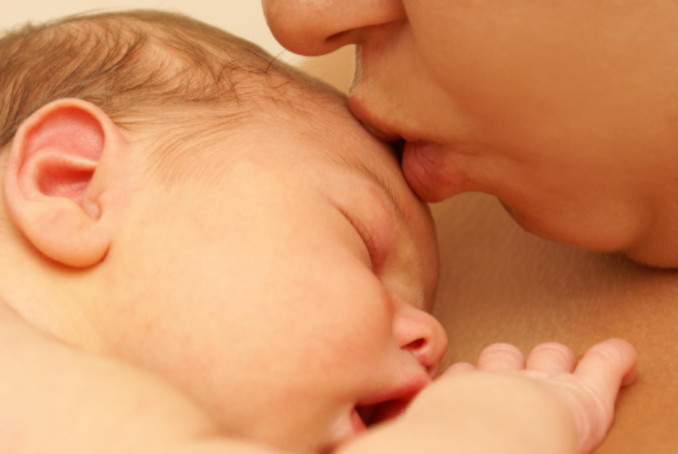
Nothing calms you down better than a hug from your mom.
Several research studies have shown that newborns need skin-to-skin contact (or “kangaroo care”) to truly thrive, particularly right after birth. That initial parent-child connection is even vital to a child’s future development.
What makes kangaroo care so powerful? Primarily, when a mother and baby are skin-to-skin, a hormone called oxytocin is released. Oxytocin is referred to as the “love hormone” and is at its highest right after birth and while breastfeeding. It is this hormone that creates a bond between you and your baby.
While skin-to-skin contact is essential for this special bond to form, there are numerous other benefits to it as well.
-
- Regulates baby’s body temperature: In the womb, your baby didn’t need to regulate its own body temperature, but right after birth, skin-to-skin contact provides a way for baby to adapt to a new and different environment.
-
- Helps baby sleep well: Babies who are skin-to-skin fall asleep easier, stay asleep longer, and their quality of sleep is better.
-
- Promotes baby’s brain development: By regulating body temperature and heart rate as well as improving sleep, the brain is able to grow and develop at a higher rate.
-
- Reduces baby’s stress: Studies have shown that skin-to-skin contact reduces baby’s cortisol (stress hormone) levels and increases baby’s oxytocin levels.
- Promotes weight gain in baby: Since your baby’s body temperature is regulated by your skin, he or she doesn’t need to use energy to warm up or cool down. Instead, your baby can use that energy to grow. Also, because cortisol levels are down, your baby’s body is able to absorb more nutrients and has better digestion.
Skin-to-skin contact is most important and beneficial right after birth, but it can continue to help your baby transition from the womb to the world in those first few months. There are also many benefits for mom as well, including: increased milk production, reduced postpartum depression, and faster recovery time.
If you’d like to learn more about transitioning baby from the hospital to home, read our article on Bringing Baby Home: Tips for the Transition.


